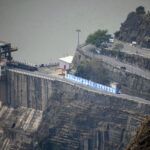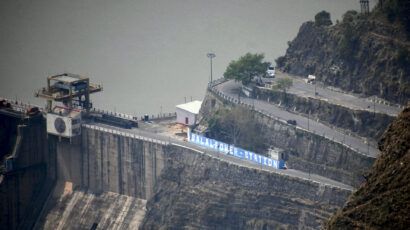Climate science, nuclear strategy, and the humanitarian impacts debate
By William Ossoff | August 10, 2016
In the wake of research published in the past decade on the long-term effects of nuclear war, a humanitarian impacts movement has formed and become a rallying point for disarmament activists, as well as a source of passionate disagreement among nations. Building on the nuclear winter research of the 1980s, more recent scientific studies have predicted severe and global environmental consequences for even a regional nuclear conflict, let alone a nuclear war between major powers. Some disarmament advocates point to these studies to reinforce moral arguments about the unacceptability of nuclear weapons. Other analysts argue that this evidence reinforces the importance of nuclear deterrence, which they see as a proven and sustainable solution for preventing war. And skeptics, including the French and Russian governments, argue that such studies either do not provide any new or useful evidence, or are too inconclusive to impact policy.
Both the proponents and the skeptics of the humanitarian impacts movement would do well to more thoroughly assess the value and implications of the latest studies. Improvements in climate modeling have provided greater insights into the long-term consequences of nuclear weapons use. But these studies are built upon a number of debatable assumptions—particularly about the way that nuclear weapons would be employed in a real conflict—that reduce their utility. What is needed now is collaboration between climate scientists and military strategists to understand the climactic consequences of plausible limited nuclear exchanges. Such research could alter cost-benefit calculations about nuclear weapons and nuclear deterrence.
Nuclear winter. From the early days of the nuclear age, scientists speculated that atmospheric nuclear explosions could have an impact on the weather, but modeling limitations prevented any robust quantitative studies of climactic effects. It was not until the 1980s that scientists began to seriously analyze the environmental consequences of nuclear war. The most famous of these studies was carried out by the so-called TTAPS team of Richard P. Turco, Owen Brian Toon, Thomas P. Ackerman, James B. Pollack, and Carl Sagan, who published a peer-reviewed article in the journal Science in 1983 with the provocative title “Nuclear Winter.” Their models focused on the climactic effects of soot rising into the atmosphere as a result of firestorms following nuclear blasts in major cities in the United States and Soviet Union. The scenarios that they considered ranged upward from 1,000 explosions totaling 100 megatons, a scenario that the authors proposed as more “limited” than all-out nuclear war. Even in this less extreme scenario, the authors asserted that the quantity of smoke would be so vast and would absorb so much sunlight that there would be significant and prolonged surface-level cooling, resulting in what they termed “nuclear winter.” Due to the star power of Sagan, who hosted the 1980 TV show Cosmos, this theory received widespread publicity.
The TTAPS report spurred a number of subsequent studies that both supported and challenged its findings. The multinational Scientific Committee on Problems of the Environment, for example, reached similar conclusions on the environmental consequences, while also examining agricultural and biological impacts. On the other hand, some critics questioned the TTAPS report for its simplifications and uncertainties. For example, the authors relied on a one-dimensional model of a planet covered entirely in land, which did not take into account that temperature changes would be less extreme over the oceans. In 1986 Starley Thompson and Stephen Schneider, both then atmospheric scientists at the National Center for Atmospheric Research in Boulder, Colorado, published a widely cited article in Foreign Affairs in which they asserted that, with a three-dimensional model that factors in the moderating effect of oceans, temperature changes would amount to a “nuclear fall,” apocalyptic only in the absolute worst-case scenario.
Nonetheless, both the US and Soviet governments acknowledged the gravity of these studies and conducted follow-up research. But, as is the case today, the policy implications that analysts drew from these studies were diametrically opposed. Disarmament advocates argued that the nuclear winter reports helped to justify arms control efforts in the late 1980s. Others argued that these new studies strengthened the case for more flexible nuclear options, particularly lower-yield nuclear weapons that would have less catastrophic consequences. After the Cold War, however, with the diminished threat of nuclear conflict, interest in nuclear winter largely dissipated.
New models, new scenarios. Since 2007, Toon and Turco, along with Rutgers University environmental scientist Alan Robock and others, have produced studies that use state-of-the-art climate modeling to update previous estimates. Given the diminished likelihood of full-scale nuclear war between the United States and Russia, they focus their analysis instead on a nuclear conflict in South Asia. Studies such as the TTAPS report were often criticized as overly fatalistic and too driven by worst-case scenarios. In contrast, the newer studies look at the effects of about 1 megaton of explosions, or just 50 to 100 Hiroshima-size (15-kiloton) weapons detonated in major cities in India and Pakistan.
Furthermore, the newer reports use models that have improved significantly since the 1980s, with advances in modern computing and more extensive data about climate change. These updated models allow for more nuanced considerations of both the chemical makeup of the atmosphere and the temperature changes over different parts of the earth. Toon and Turco now argue that earlier estimates of nuclear winter may have actually underestimated the climate effects. Research conducted in the past decade indicates that soot would rise higher into the atmosphere than was previously thought. A 2007 study by Robock, Toon, Turco, and three other colleagues suggested that soot could rise into the upper stratosphere, 40 kilometers above the surface. A 2014 study by Michael J. Mills, a scientist at the National Center for Atmospheric Research, and three colleagues (including Robock and Toon) found soot lofting even higher: 50 to 60 kilometers above the surface. As a result, the black carbon would linger longer in the atmosphere rather than being removed by precipitation. The Mills study also found that the temperature drop that would result from such an influx of soot would cause a reduction in the growing season by 10 to 40 days for five years, which would have disastrous agricultural effects.
However, it is important to point out the significant assumptions and uncertainties in these studies. Robock and Toon concede that more analysis needs to be done on the properties of the different kinds of smoke that would emanate from various targets, given that the size of the smoke particles determines how much sunlight they would absorb and how long they would linger in the atmosphere. Furthermore, the total amount of black carbon ejected from cities in these models is often cited as 5 trillion grams—but this calculation is based on a model that assumes that the amount of fuel per unit area in a city is a linear function of population, a significant assumption. Also, a 2010 US government report suggested that firestorms are far less likely to result in modern cities, at least in the United States, due to the nature of their design and construction, including the lower density of combustible material.
This connects to the most controversial aspect of nuclear-winter research, which is not technical but strategic. The authors of these South Asia studies emphasize that a smaller nuclear exchange could cause global catastrophe, but they assume in their studies that the targets are the 50 largest cities in India and Pakistan, incredibly densely populated areas. Such a targeting scenario allows for worst-case calculations of soot production, but it is not necessarily the most likely result of an actual nuclear exchange.
Expanding the hypotheticals. Notwithstanding their limitations, the studies of the past decade nevertheless demonstrate an improved ability to assess the long-term impacts of nuclear conflict. As Schneider pointed out just before the release of the 2007 paper by Robock and colleagues, the effects of a war in South Asia could be far more disastrous than one at northern latitudes, because the sun is much stronger and the cooling effect would be more significant. The most direct implication that can be drawn from these studies, therefore, is that prevention of nuclear war in South Asia is not just a South Asian concern, but a global one—although these studies do not resolve the debate about whether deterrence or disarmament is the most effective preventive measure.
It is more tenuous to draw conclusions about other hypothetical nuclear conflicts, particularly those that directly involve the United States. In order to reduce humanitarian impacts and avoid violations of the international law of war, the United States might prefer to employ low-yield weapons on military targets, which could start significantly fewer fires and produce less soot than the urban strikes considered in the studies done by Robock, Toon, and others. Of course, even with efforts to reduce collateral damage in the early stages of a nuclear conflict, escalation could lead to much less discriminate targeting. In addition, studies in the 1980s considered the effects of a “counterforce” nuclear war (one that involves targeting of military sites rather than population centers) and found that attacks on military installations could also cause significant soot generation, but these studies assumed a wide-scale nuclear war between the United States and the Soviet Union. The updated climate models may be able to provide insight into the effects of a more limited counterforce exchange between the United States and a major adversary, and follow-up studies should be conducted that consider such a scenario.
In order for this research to be most effective, climatologists should collaborate with experts in nuclear strategy. Fire damage experts should be consulted as well, given that there is still a significant amount of uncertainty about fire and soot generation. Due to bureaucratic barriers and security considerations that limit information sharing in the US government, collaborative research between these groups of experts would likely have to originate in the nongovernmental community. A reexamination of fire damage, combined with advances in climate modeling, could help determine the threshold at which the environment would be irreversibly altered. Simultaneously, retired military strategists could conduct war games to determine plausible scenarios of nuclear use, short of all-out nuclear war. One of the major criticisms of the South Asia studies published by Robock, Toon, and others is that they do not really consider a “limited” nuclear conflict, due to the assumed targeting of major cities, and thus are too extreme to have any bearing on US policy. However, follow-up studies considering other targeting scenarios could improve confidence in the usefulness of the models and, depending on the outcome, influence considerations of nuclear weapons use.
It is possible that further research could reinforce current assumptions: that long-term climate effects would only result from a major nuclear conflict, one that either involves hundreds of attacks on military targets or the destruction of cities. Such a large-scale conflict would cause devastating casualties, so a greater understanding of its environmental impacts would be unlikely to accentuate efforts to avoid nuclear war. However, new research could also uncover severe environmental effects of genuinely limited nuclear conflicts. If this is the case, it might become necessary to reconsider the risks and benefits of nuclear deterrence. Regardless of the outcome, robust research on environmental consequences can better inform decision-making about the US nuclear posture.
Together, we make the world safer.
The Bulletin elevates expert voices above the noise. But as an independent nonprofit organization, our operations depend on the support of readers like you. Help us continue to deliver quality journalism that holds leaders accountable. Your support of our work at any level is important. In return, we promise our coverage will be understandable, influential, vigilant, solution-oriented, and fair-minded. Together we can make a difference.
Topics: Climate Change, Nuclear Weapons, Voices of Tomorrow















